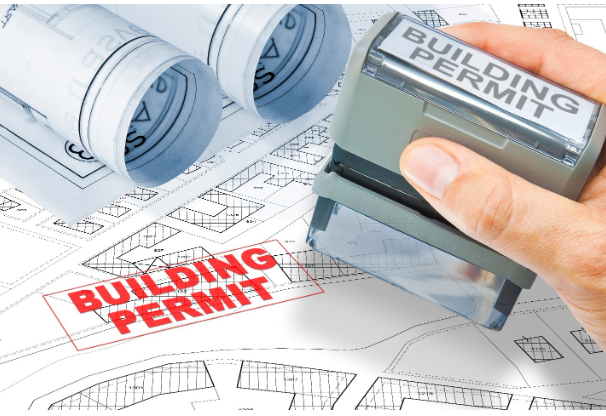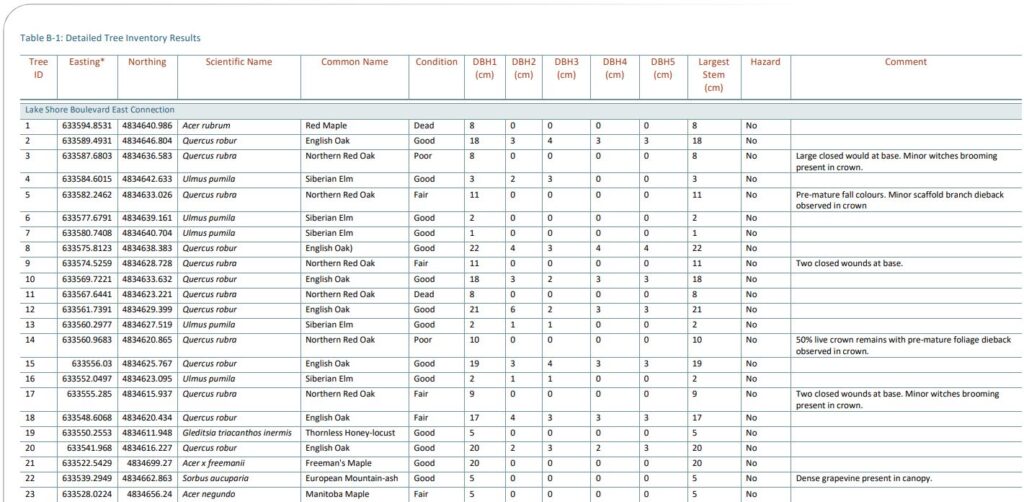
The Arborist Report and Tree Protection Plans (TPP) are a requirement of the permit application process in Toronto for any construction project involving trees. Whether you’re planning to remove, preserve, or replant trees, understanding this process can save you time and prevent costly delays by ensuring compliance with Toronto’s stringent urban forestry bylaws.
In this guide, we’ll break down the 5 steps you must follow to navigate the tree bylaws required for your permit application effectively. By the end of this blog, you’ll know how to streamline your application and keep your project on track.
1. Determine If a Permit Is Required
The first step is understanding whether your project requires an urban forestry permit.
In Toronto, permits are typically necessary if:
- You are removing a tree with a trunk diameter of 30 cm or more, measured at 1.4 metres above ground level.
- Your project impacts protected trees located on public or private property.
To avoid missteps, consult Toronto’s Private Tree Bylaw and Municipal Code, Chapter 813.
Tip: Unsure if your project requires a permit? A certified arborist can help assess your project and determine your obligations.
2. Conduct a Tree Inventory and Assessment
Once you’ve confirmed that a permit is required, the next step is to prepare a tree inventory and assessment. This document should include:
- A detailed inventory of all trees on or near your site, including species, size, and location.
- Tree health assessments to identify diseased or hazardous trees.
- Recommendations for tree preservation or removal based on your project’s scope.

Sample tree inventory table
3. Prepare Your Urban Forestry Permit Application
Next, compile the necessary documents for submission. A complete urban forestry permit application in Toronto includes:
- Application Form: Available through the City of Toronto’s Urban Forestry Services.
- Arborist Report: Detailing the findings from your tree inventory and assessment. This report must be prepared by a certified arborist.
- Site Plan: Showing tree locations, tree protection zones, and areas of proposed development.
- Tree Protection Plan: Outlining measures to protect trees during construction.
Make sure your submission is accurate and thorough, as incomplete applications are a leading cause of delays.
4. Submit Your Application and Pay the Fees
Submit your completed application to the appropriate division of Toronto’s Urban Forestry Services. Application fees vary based on a number of factors, including the number of trees impacted and whether they are located on private or public property.
Keep the following in mind:
- Submit your application well in advance of your project timeline to account for processing times.
- Retain copies of all submitted documents for your records.
5. Implement Tree Protection and Compliance Measures
Once your permit is approved, you’re required to follow the outlined conditions, including:
- Monitoring tree health throughout the project.
- Adhering to tree replacement requirements, if applicable.
Non-compliance with permit conditions can result in penalties, delays, or permit revocation. To ensure everything runs smoothly, collaborate with your arborist to oversee tree protection measures during construction.
Navigating the urban forestry permit application process in Toronto doesn’t have to be overwhelming. Let Gray Matter Forestry Consulting guide you through each step with expert arborist reporting and support. Book an Arborist Consultation Call today to get started!
Additional Tips for a Smooth Urban Forestry Permit Application Process
Engage an arborist early
Involving an arborist at the beginning of your project helps identify potential issues and ensures all documentation meets city requirements.
Double-check your application
One of the most common mistakes is submitting incomplete or inaccurate forms. Double-check every detail before submission to avoid delays.
Plan for tree replacement costs
If trees are being removed, budget for replacement tree planting. Toronto’s bylaws often require planting multiple trees per tree removed, which can add to project costs.
Stay updated on bylaws
Urban forestry regulations evolve over time. Stay informed about the latest updates to ensure your project remains compliant.
Conclusion
Successfully navigating the urban forestry permit application process in Toronto is essential for construction projects involving trees. By following these 5 key steps—determining if a permit is required, conducting a tree inventory, preparing a detailed application, submitting your documents, and implementing compliance measures—you can avoid penalties, and keep your project on schedule.
At Gray Matter Forestry Consulting, we specialise in helping GTA professionals streamline their urban forestry permit applications with accurate arborist reports and expert guidance. Book an Arborist Consultation Call today to simplify your process and ensure compliance with ease.
